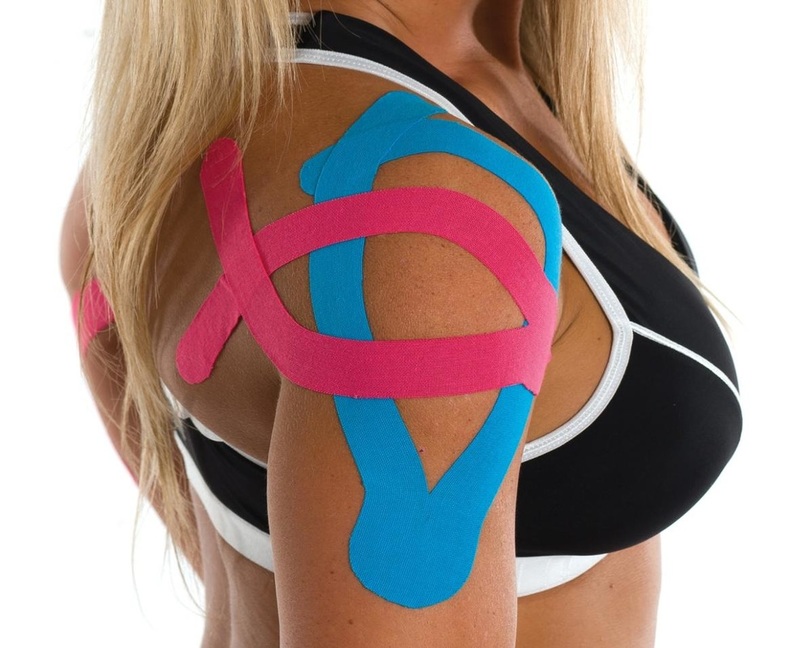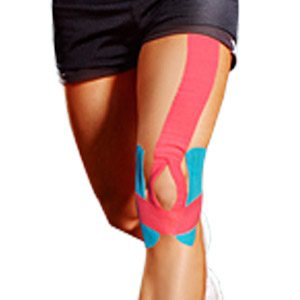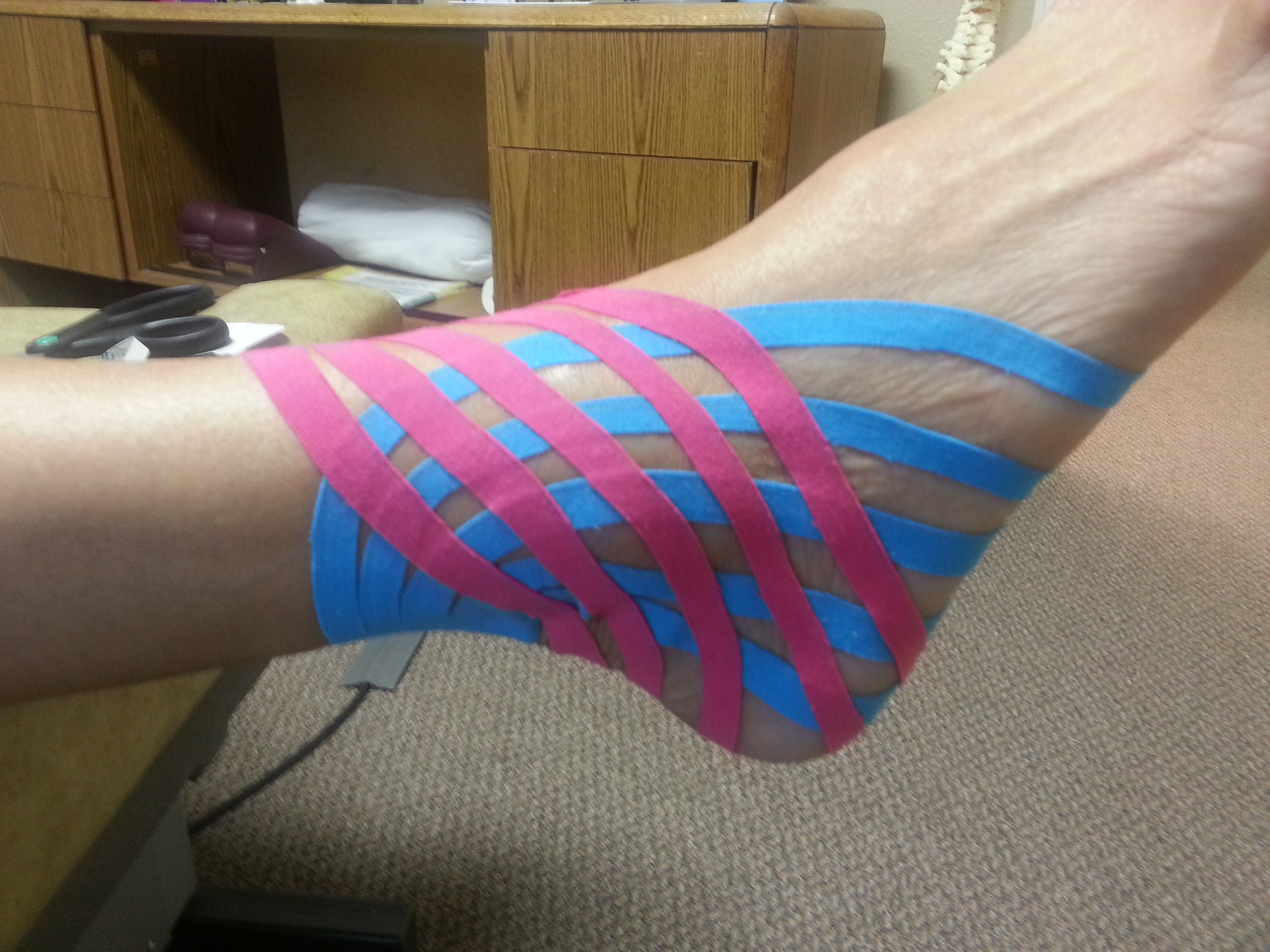Blog
07 Sep 2018
Kinesiotaping
By Laurie Edge-Hughes, BScPT, MAnimSt, CAFCI, CCRT
K3PO what??? You know! That colourful tape you see on professional athletes? That’s the stuff. Kinesiotape! Or otherwise known as ‘kinesiology tape’ or ‘K-Tape’.
What’s the deal with that!?
Well, the original kinesiology tape was developed for human athletes in the 1970’s by a Japanese chiropractor named Kenzo Kase. It was developed to correct abnormalities in myofascial tissues (myo = muscle & fascia = the cotton candy-like fibres that holds all of your inside bits in place).
It’s generally a stretchy, light weight, cotton material that doesn’t impede movement. When applying it to the skin, the thought is that it lifts the skin and underlying tissues. In doing so, it is theorized to help enhance microcirculation, enhance gliding of the fascia, reduce pressure and pain in an area and potentially activate underlying muscles because of the stimulus to the skin’s nerve receptors.
While its application and the ‘application rules’ have all been postulated, there has been some good research to back up its use.

- It CAN help with biomechanics (i.e. the mechanics of your body.) A study in 2013 found that taping around the shoulder and shoulder blade area had a beneficial effect on the position of the shoulder blade. (And this is a good thing, because your shoulder blade position has a huge impact on whether the tendons at your shoulder get pinched, overused, or used incorrectly!)
- It SEEMS to help with proprioception (i.e. body awareness). Two studies, (also done in 2013) looked at ankle instability, and they did seem to show some degree of improvement in postural control when used.
- It MIGHT also have an impact on pain management in the short term (i.e. day 1 after an injury). Beyond that it didn’t really do much to help with pain. These findings were presented in two studies – 2008 and 2013.

However, ALL ‘theories’ about kinesiotaping aren’t all backed up by research.
For example, K-tape can help with pain in the knee-cap when climbing stairs, but didn’t have a long-term effect. K-tape was ‘better than nothing’ for low back pain, but not as good as other therapeutic alternatives. K-tape may help functional performance in a symptomatic population (i.e. if something hurts), however hasn’t been shown to improve performance in healthy elite athletes. As well, there isn’t proof that it helps to reduce swelling or helps with muscle activation.

More modern uses might yield new or different findings. Practitioners are now using this tape along the planes of your fascia or incorporating acupoints and meridians lines. It’s also safe to say that by itself, K-tape isn’t likely to heal your aches and pains. However, it might serve you well in conjunction with other therapies - as another one of the tools in the tool kit that your therapist uses when treating your injury. Beyond that, you’ll look like one of those million dollar athletes when you walk out the door with it on! And that’s cool too!
